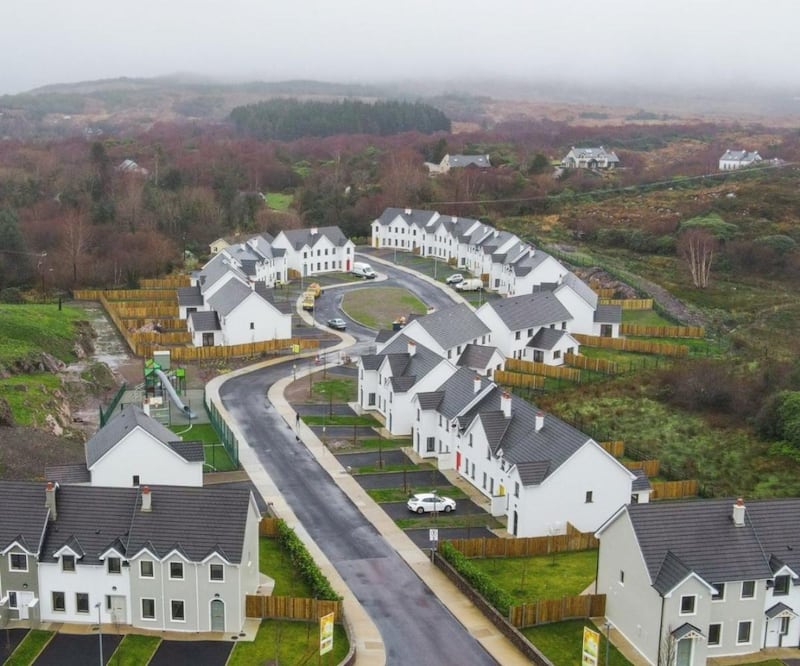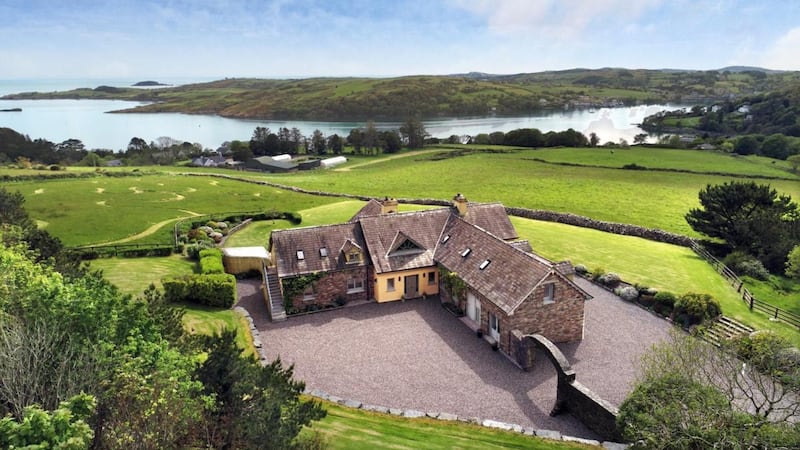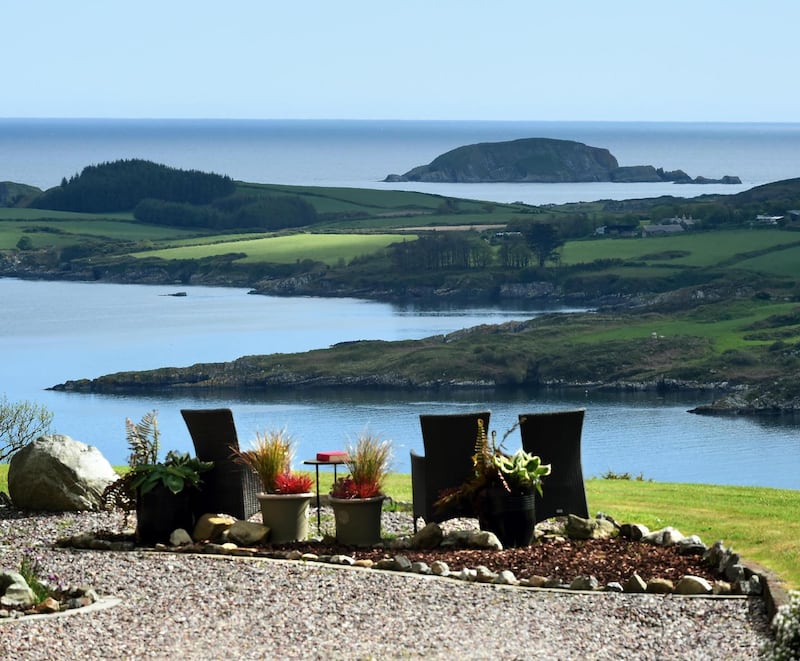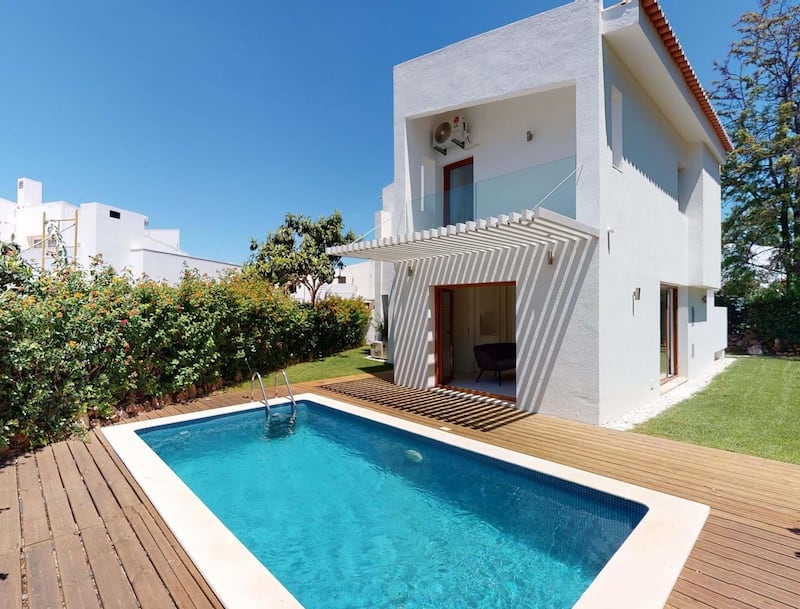How much would you pay for a shack on 1.5 acres overlooking Clones Strand? Well, Wexford agent Niall Slattery of Warren Estates thought about €300,000 sounded right last summer, but the market quickly told him he was wrong.
Indeed the property, which has full planning permission for a modernist style three-bed home and has direct access to the beach below, ended up selling for €735,000, more than double the original asking price.
While not reflective of the broader holiday home market, the sale nonetheless illustrates the demand – and the money – that is out there at present for a bolthole by the sea or the mountains.
In an unprecedented year, where foreign travel has become increasingly difficult, having the ability to access your own holiday home, potentially far away from the madding crowd and the Covid-spreaders, has become hugely valuable for many.
While some people suffered during the pandemic, many others prospered. Indeed, Irish household savings are at an all-time high of some €131 billion, while rocketing stock prices over the past year has meant those in receipt of stock options have seen their wealth soar.
And some of this money is starting to find its way into holiday homes.
“People have money and they can’t go away on holidays. A lot of people are in a financially better position than they were 12 months ago,” says Maeve McCarthy of Charles McCarthy Auctioneers in west Cork.
This bump in demand, combined with shrinking supply, means that the holiday home market has become increasingly competitive.
Not enough homes
As with elsewhere in the country, the main holiday home theme this summer is that there are simply not enough homes up for sale.
In and around Kenmare, Co Kerry, auctioneer Majella O'Sullivan says there is a "serious shortage of supply", due to a lack of building over the past 10 years, as well as increasing demand from Irish buyers.
“Demand is huge, we can’t keep up with demand,” she says.
McCarthy, in nearby west Cork, agrees.
“One hundred per cent there’s not enough houses for sale; there’s a complete lack of stock at the moment,” she says, noting that there are no new developments in the area, which encompasses popular towns and villages like Baltimore, Schull and Skibbereen.

Those who have holiday homes tend to be holding onto them, at least for this summer.
And new developments are thin on the ground. While plentiful in the early years of the 2000s, driven by tax-incentivised construction, these days the sightings of cranes and diggers at coastal locations are few and far between.
In north Wexford, Slattery says there has been no new development of holiday homes in 15 years.
One new development that has just hit the market is Ard an Oir in Sneem, Co Kerry, where prices start at €215,000 for three-bed mid-terrace houses, rising to €240,000. O'Sullivan says that about 16 of the 42 properties have already gone sale agreed since its launch in June, noting that buyers are "predominantly Irish", many of whom have connections with the area.
Holiday home sales
Terryduff, Ballina, Co Mayo
Asking €785,000
Sold €660,000
Difference -16%
The Rookery, Cheekpoint, Waterford
Asking €88,000
Sold €63,000
Difference -28%
111 St Helens Village, Rosslare, Co Wexford
Asking €175,000
Sold €208,000
Difference 19%
Colla West, Schull, Co Cork
Asking €490,000
Sold €475,750
Difference -3%
Clones Strand, Wexford
Asking €300,000
Sold €735,000
Difference +145%
Irish in the driving seat
In years gone by, international buyers, particularly from the UK, would have stimulated demand in many coastal areas, particularly west Cork, Kerry and Connemara. With travel restrictions in place, however, demand from overseas has narrowed considerably.
In Kerry, while some foreign buyers have been in the market, targeting more remote properties, O’Sullivan says there has “not been a lot” of UK buyers.
“All the demand is mainly coming from the Irish market at the moment,” agrees McCarthy, noting that in years gone by, 25 per cent of buyers would have come from the UK, but this has now slid to about 5 per cent.
“But the Irish market has come back to compensate for that,” she adds.
“I think Covid has impacted where they’re going to holiday; a lot of people are going to holiday at home for the next few years,” says O’Sullivan.
With remote working normalised, it also means that people are looking to buy more than a holiday home, with the potential now to spend the entire summer there – provided the house offers one key utility.


“Broadband is the same as water and electricity now in relation to holiday homes. If you don’t have broadband access you might as well say you’ve an outside toilet,” says McCarthy.
There is also demand from people looking to make a permanent move. In Wexford, most of the viewers for typical family homes are coming from Kildare, Dublin or north Wicklow, says Slattery, noting that Wexford to Dublin has become "very commutable" a few days a week.
“There is plenty of money out there but a lot of it isn’t local money,” he says.
And the Irish have money to spend, with most transactions “predominantly cash”, says O’Sullivan.
Price trends
In short, higher demand and lower supply will equate to rising prices. But as holiday homes are a discretionary purchase, the same pressure to buy when compared with a home to live in typically isn’t there.
However, Covid has changed this somewhat, with Irish people keener to have a place to holiday close to home.
“Anything good quality that’s priced well – we can’t keep the stock,” says McCarthy.
A recent Daft survey of prices of coastal properties found that asking prices had increased by almost a quarter, or 23 per cent, since before the Covid-19 pandemic. This compares to a national average increase of just 8.7 per cent in the same period.
Wexford’s Kilmore Quay had the biggest price rise in the Daft.ie survey, with prices up by 54.2 per cent to €230,644 for a typical three-bed home, while Lahinch in Clare also saw strong growth, up by 39.4 per cent to €235,590.
In Baltimore, for example, a typical three-bed holiday home might make €250,000-€300,000 this year, up from about €210,000-220,000 last year, she says.
In Wexford, O’Sullivan recently sold a three-bed home at Sandycove in Ballymoney. It was asking €250,000 but eventually went sale agreed at €315,000.
But it’s not all one way.
In west Cork, McCarthy notes that prices have risen, but that it will really depend on the house.
“People [vendors] still have to be realistic,” she says. “The market always finds its own level. If it’s priced well, it will invariably go up at the moment, but if it’s over-priced you will get zero interest in it.”
Indeed, one possible holiday home that came to the market last year was at The Rookery in Cheekpoint, Co Waterford. It was seeking €88,000 but ended up selling for €63,000, or 28 per cent less. Similarly, Terryduff in Ballina, Mayo, made 16 per cent less than its asking price.
At the upper end of the market, in the €1 million-plus zone, McCarthy says it has been “very busy”. And all the buyers are Irish.
Those with €1.5 million or more to spend, however, are sticklers on one thing.
“Access to the water from the property is non-negotiable,” she says.
Consider a site
Another option for people looking for a holiday home is to buy a site and construct the property themselves. However, as the earlier Clones Strand example illustrates, this can be an expensive proposition. While the site sold for €735,000, the estimated cost to build a home on that land was about €350,000-€400,000, bringing total costs some way north of €1 million.
In west Cork, McCarthy currently has a fully serviced site in Ardfield, with full planning permission for a four-bed detached home, near the popular Red Strand beach in Clonakilty, on the market for €240,000.
However, she notes that the cost of construction for a home of about 2,700sq ft would be about €405,000, or €150 per sq ft. And that’s not for a high-end finish.
“I don’t think people realise how much it costs to build a house,” she says.
Construction costs can also make the more traditional-style cottages less appealing. They may still have the “romance”, as McCarthy notes, but potential buyers need to factor in costs of renovation.

Foreign homes
It’s not just Ireland where buyers are looking. Some are hoping for a little bit more sun.
David Rowat is owner of Olivehomes. com, an Algarve-based auctioneer. He has noticed "substantially" more Irish buyers interested in a holiday home in the area, with some now making the trip out to look at property.
“I don’t really know why, but it seems to have crept back up a lot,” he says, “Enquiries have probably gone up by 30 per cent year-on-year for Irish clients.”
On the agenda for Irish buyers are villas in the more upmarket parts of the Algarve, such as Quinta do Lago and Vilamoura, for a typical budget of about €650,000.
“Markedly less people are looking for apartments,” he says, “people want their own space”.
While golf is an attraction, people are primarily looking for family-friendly homes. And, as with at home, people are also looking to spend more time in these properties, working from their Portugal base for some of the year.
Some Irish may also be attracted by the country’s non-habitual resident scheme, which allows you to pay tax at a rate of just 20 per cent on your earnings, and zero per cent on your pension, guaranteed for 10 years.
Golf properties
Where there may be greater supply is when it comes to golf, which is always an attraction amongst a certain cohort of Irish buyer. At Mount Juliet in Kilkenny, you can buy a five-bed detached home for €1.75 million, or a two-bedroom lodge apartment for €475,000, while a number of properties are for sale at the K Club, including a four-bed home at Ladycastle for €1.25 million, and a two-bed duplex apartment for €450,000.
Two properties have also just come on the market at Trump International Golf Links & Hotel in Doonbeg, Co Clare. A three-bedroom, three-bathroom ocean-view suite is listed at €795,000, while a two-bedroom courtyard suite is seeking €495,000.











